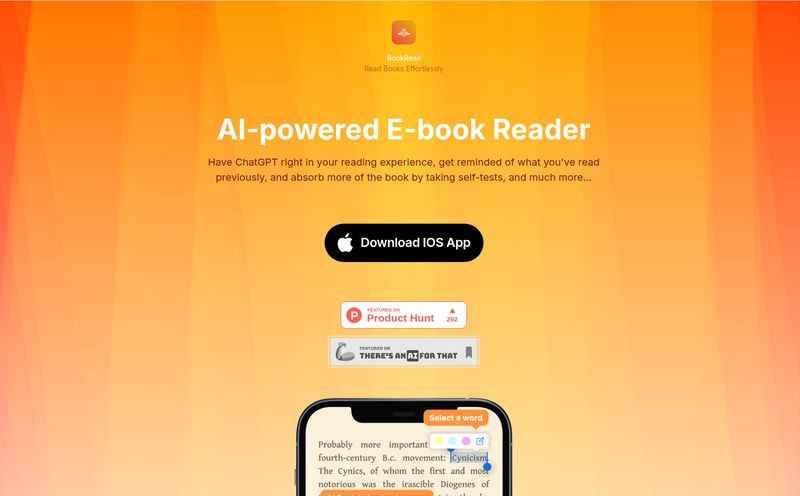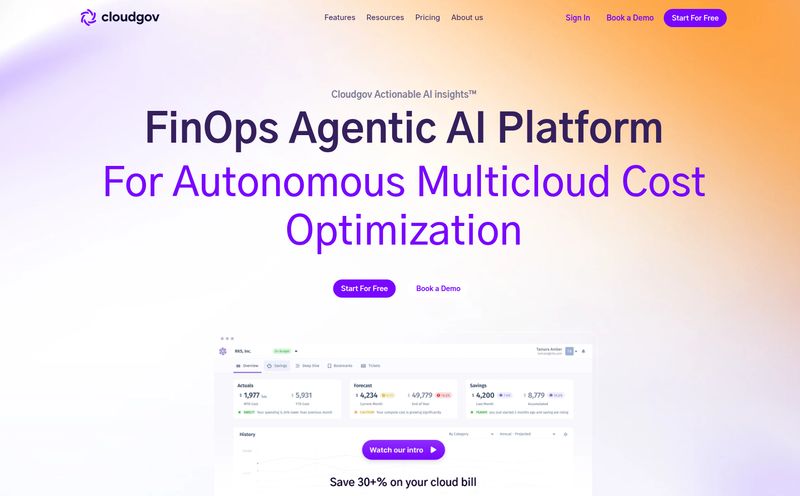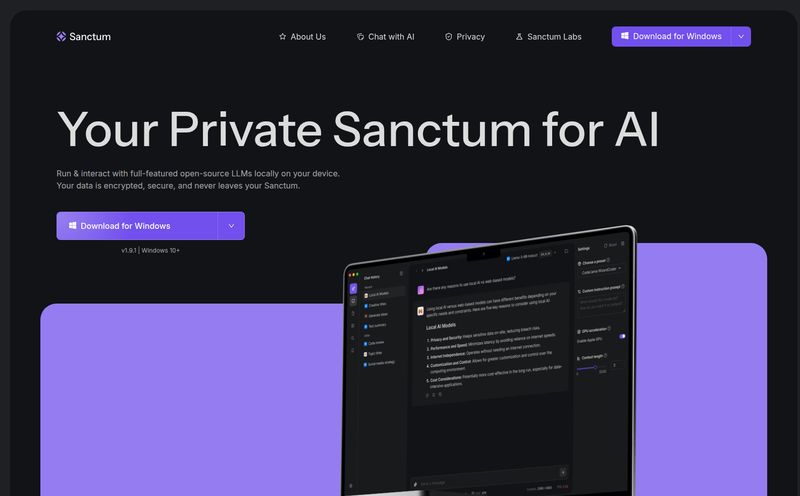We’ve all been there. Staring at a goal so massive, so intimidating, it feels less like an ambition and more like a mountain. You know, the “I’m finally going to write that novel” or “This is the year I launch my own business” kind of goal. The excitement is there, for about five minutes. Then the overwhelm crashes in. You make lists. You buy planners. You watch productivity gurus on YouTube. And a month later, you’re left with a beautiful, empty notebook and that same, daunting mountain.
I’ve been in the SEO and digital marketing game for years, and I’ve seen this pattern with clients, colleagues, and if I’m being completely transparent, myself. We call it “analysis paralysis.” It’s the art of planning to plan. Well, the latest wave of AI tools is promising to be the cure for this particular brand of procrastination. And one that recently popped up on my radar is Steption.
Its promise is simple and bold: “Stop overthinking and start achieving.” Okay, Steption. You have my attention. But is it just another shiny object in the ever-growing sea of AI apps, or is it the real deal?
What Exactly is Steption? More Than Just Another To-Do List App
At its core, Steption is an AI-powered platform that builds you a personalized action plan. You feed it your big, scary goal, and it breaks it down into small, manageable, step-by-step tasks. Think of it less like a nagging to-do list and more like a GPS for your ambitions. You tell it the destination (“launch my artisanal dog biscuit empire”), and it calculates the route, giving you one turn—one task—at a time.
The website is plastered with phrases like “No stress, no guesswork — just progress.” This speaks directly to the heart of the problem, doesn’t it? It’s not that we don’t want to do the work; it’s that we don’t know what the very next step is. Steption aims to eliminate that friction completely. It’s designed to be the bridge between your grand vision and the simple, sometimes boring, work that actually gets you there.
It’s an interesting pivot from the typical productivity app, which often just gives you a fancier place to write down the things you’re already avoiding.

Visit Steption
How Steption Promises to Turn Your Dreams into a Checklist
The process, as laid out on their site, seems deceptively simple. It’s a five-step flow that feels intuitive, which is already a win in my book. Too many tools require you to learn a whole new system before you can even get started.
- Define Your Goal and Commitment: You start by telling the AI what you want to achieve and some basic parameters, like your available time. No fluff.
- AI Breaks Down Your Goal: This is where the magic is supposed to happen. The AI takes your input and starts mapping everything out, identifying the milestones and the tiny steps needed for each phase.
- Get a Step-by-Step Plan: You’re not handed a 200-item list that induces immediate panic. Instead, Steption gives you the first step. Just one.
- Focus on One Task at a Time: The whole philosophy is to keep you laser-focused on the immediate task. You only get your next task once you’ve completed the current one. This is a classic productivity hack, weaponized with AI.
- Reach Your Goal, Stress-Free: As you progress, the plan adapts. Life happens. If you fall behind or a task takes longer, the system is designed to adjust, keeping the journey smooth rather than making you feel like a failure.
I have to say, the idea of only seeing one task at a time is incredibly appealing. It’s the digital equivalent of putting blinders on a racehorse. It removes the distraction of the monumental task ahead and just lets you run your part of the race.
The Core Promises: Can It Really Kill Procrastination?
Steption’s landing page highlights four main benefits, which are basically the four horsemen of the anti-procrastination apocalypse: Effortless Planning, Goodbye To-Do Lists, Focus on the Now, and Flexible and Adaptive. Sounds great, but let's read between the lines.
For me, the most compelling part is the “Flexible and Adaptive” nature. Traditional project plans are brittle. The moment you deviate, the whole thing can feel broken. As anyone who has ever tried to stick to a rigid schedule knows, life loves to throw curveballs. An adaptive planner that recalibrates without shaming you? That could be a game-changer for consistency. It’s the difference between a strict teacher who fails you for a late assignment and a coach who adjusts the training plan when you pull a muscle.
Some might argue this is just a fancy version of David Allen’s Getting Things Done (GTD) methodology, which preaches breaking projects down into “next actions.” And they wouldn’t be wrong. But the difference is the cognitive load. With GTD, you have to do all the breaking down. With Steption, the AI is your executive assistant, doing the heavy mental lifting so you can save your energy for the actual execution. That’s a powerful value proposition.
A Look at the Good, the Bad, and the AI-Generated
No tool is perfect, of course. Based on the info they've shared and my own experience with similar platforms, here's my breakdown of what to get excited about and where to be cautious.
The Bright Side of Steption
The biggest pro is the sheer psychological relief it promises. Handing over the mental load of planning to an AI could free up immense bandwidth. The focus on small, consistent progress is also powerful. We all know that compounding effort is how you achieve big things, but our brains are wired for instant gratification. By serving up one small, completable task at a time, Steption is basically trying to hack our dopamine response for long-term gain.
For creatives, entrepreneurs, and students—the exact people they feature in their testimonials—this could be huge. It’s for anyone whose work involves a lot of self-direction and a high risk of getting lost in the weeds.
Potential Hurdles to Consider
Let's be real. The tool’s effectiveness is entirely dependent on the quality of your input. It's the classic “garbage in, garbage out” problem. If you give it a vague, uninspired goal, you’ll probably get a vague, uninspired plan. You still need to do the initial work of defining what you truly want.
Also, it requires commitment. This isn’t a magic pill. The AI provides the steps; you still have to walk them. If you’re not willing to show up and do the work, no app in the world can help. Finally, for highly specialized or technical goals (e.g., “develop a new cryptographic algorithm”), it might not have the domain-specific knowledge to create a genuinely useful plan. I'd imagine it shines brightest on projects and goals that have a somewhat established path, like writing a book, starting a podcast, or building a marketing funnel.
Who is This Tool Actually For?
Looking at the testimonials is pretty revealing. We have Lauren, an aspiring author, who felt overwhelmed. Sarah M., a project manager, who used it to focus on her personal brand. Marcus M., a startup founder, struggling with priorities. And Emily T., a student, procrastinating on assignments.
The common thread here isn't a profession; it's a feeling. It's for people who are stuck. People who have the ambition but are caught in the gap between the idea and the execution. If you're a seasoned project manager with a rock-solid system that works for you, you might not need this. But if you're someone who feels a constant, low-grade anxiety about your big goals, you are the bullseye of their target audience.
The All-Important Question: What's the Price?
Ah, the million-dollar question. Or, hopefully, the much-less-than-a-million-dollar question. As of writing this, there's no public pricing information. The pricing page on their website currently leads to a 404 error, and the JSON data I found was empty. This almost definately means the product is in a pre-launch or closed beta phase.
The main call-to-action on the site is “Join the Waitlist.” While this can be frustrating for those who want to jump in right away, it’s a smart move for a new company. It lets them build hype and onboard users at a controlled pace. My advice? If you're intrigued, get on the list. You’ll be the first to know about a public launch and any potential early-bird pricing.
My Final Take: Is Steption Worth Joining the Waitlist For?
So, what’s the verdict? I'm cautiously optimistic. I’ve seen a thousand productivity tools, and most of them just add to the noise. Steption feels different because it’s not trying to help you organize your chaos; it’s trying to prevent the chaos from happening in the first place.
It correctly identifies the real enemy: not a lack of ambition, but a lack of clarity on the very next step. By combining a proven productivity principle (small, sequential tasks) with AI, it has the potential to be a seriously powerful tool for personal and professional growth.
I've signed up for the waitlist myself. I'm curious to see if the execution lives up to the promise. In a world that constantly bombards us with distractions, a tool designed to provide singular focus might be exactly what we need. It’s not just about managing tasks; it's about managing focus. And in the modern economy, focus is currency.
Frequently Asked Questions About Steption
So, how does Steption work in simple terms?
You tell the Steption AI your main goal (like 'start a YouTube channel'). The AI then breaks that big goal down into a simple, step-by-step action plan. It only shows you one task at a time, so you can focus on what's right in front of you without getting overwhelmed by the full list.
What happens if I fall behind on my plan?
One of Steption's core features is its adaptive planning. The platform is designed to adjust your plan if you miss deadlines or if a task takes longer than expected. The goal is to provide a smooth, stress-free path, not a rigid one that makes you feel bad for being human.
What kind of goals is this good for?
Based on its approach, Steption seems ideal for complex, multi-step projects that can cause overwhelm. This includes things like writing a book, starting a business, learning a new skill, planning a large event, or even tackling a big academic project. It might be less effective for simple, daily habits or highly technical goals that require deep, specialized expertise.
Why is there a waitlist? When can I use it?
A waitlist usually means the product is in its early stages, likely a closed beta or pre-launch phase. This allows the developers to onboard users gradually, gather feedback, and ensure stability. There's no public timeline for a full release, so joining the waitlist is the best way to get access and stay updated.
Is Steption free?
Currently, there is no public information about Steption's pricing. The absence of a pricing page suggests they haven't finalized their subscription model yet. Joining the waitlist will likely give you first access to pricing details and any introductory offers.



